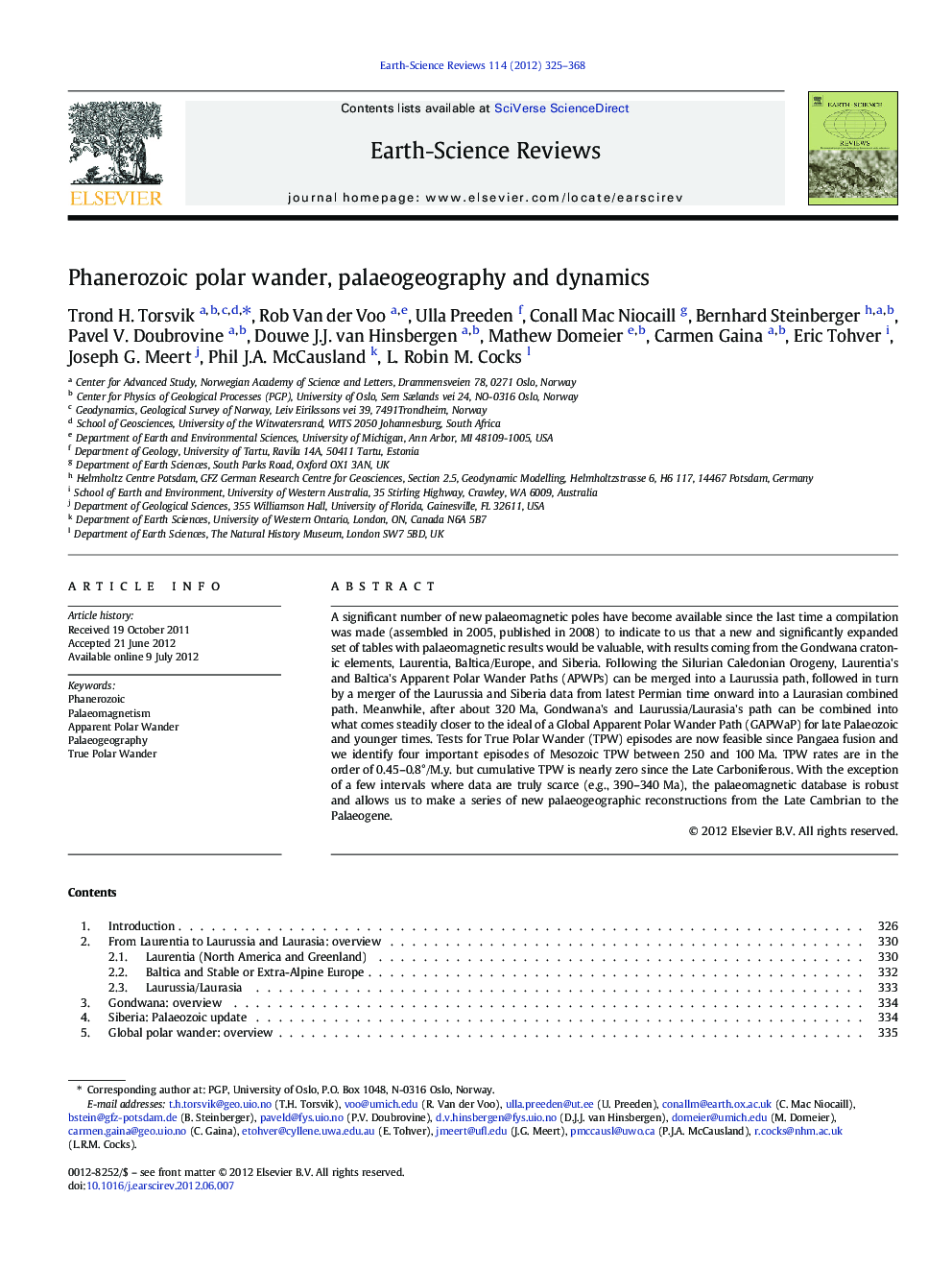| Article ID | Journal | Published Year | Pages | File Type |
|---|---|---|---|---|
| 4725941 | Earth-Science Reviews | 2012 | 44 Pages |
A significant number of new palaeomagnetic poles have become available since the last time a compilation was made (assembled in 2005, published in 2008) to indicate to us that a new and significantly expanded set of tables with palaeomagnetic results would be valuable, with results coming from the Gondwana cratonic elements, Laurentia, Baltica/Europe, and Siberia. Following the Silurian Caledonian Orogeny, Laurentia's and Baltica's Apparent Polar Wander Paths (APWPs) can be merged into a Laurussia path, followed in turn by a merger of the Laurussia and Siberia data from latest Permian time onward into a Laurasian combined path. Meanwhile, after about 320 Ma, Gondwana's and Laurussia/Laurasia's path can be combined into what comes steadily closer to the ideal of a Global Apparent Polar Wander Path (GAPWaP) for late Palaeozoic and younger times. Tests for True Polar Wander (TPW) episodes are now feasible since Pangaea fusion and we identify four important episodes of Mesozoic TPW between 250 and 100 Ma. TPW rates are in the order of 0.45–0.8°/M.y. but cumulative TPW is nearly zero since the Late Carboniferous. With the exception of a few intervals where data are truly scarce (e.g., 390–340 Ma), the palaeomagnetic database is robust and allows us to make a series of new palaeogeographic reconstructions from the Late Cambrian to the Palaeogene.
